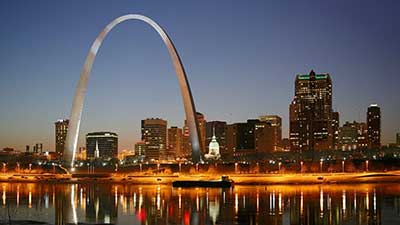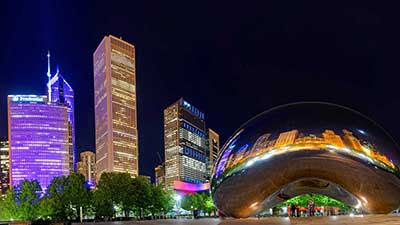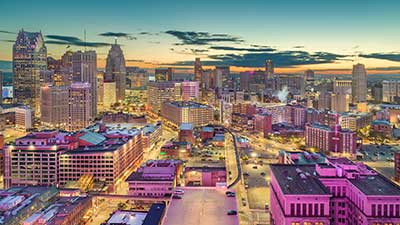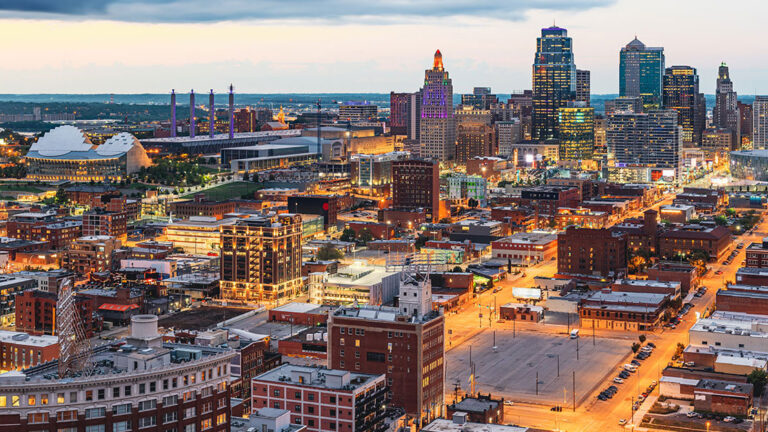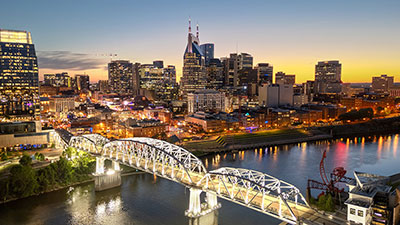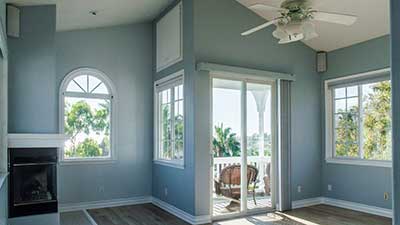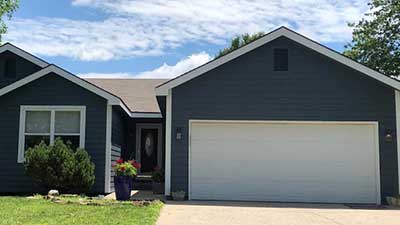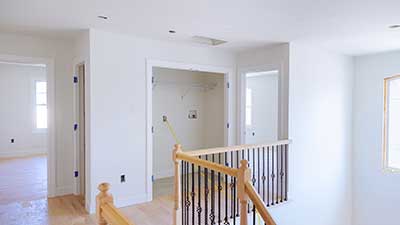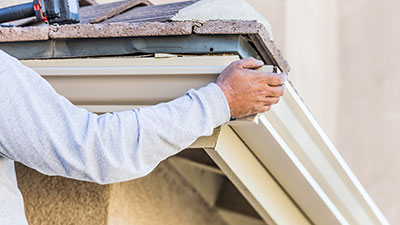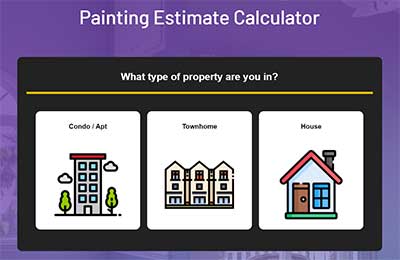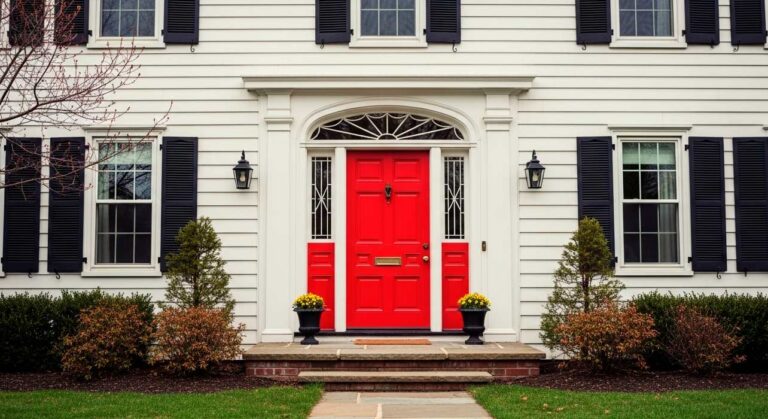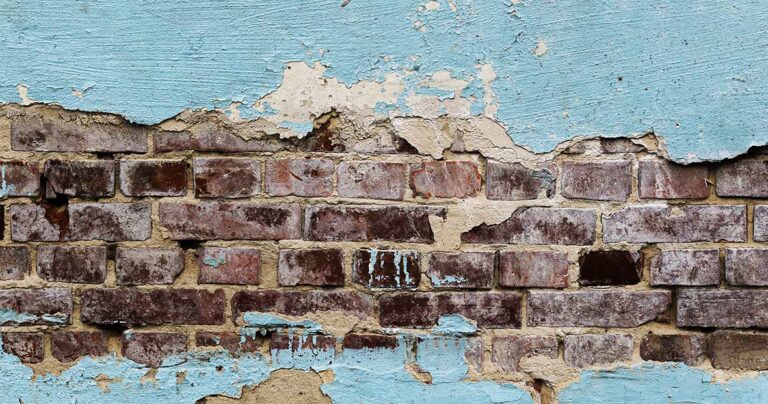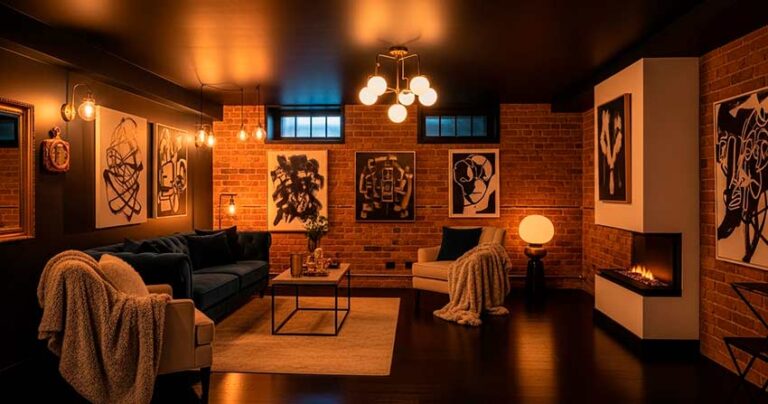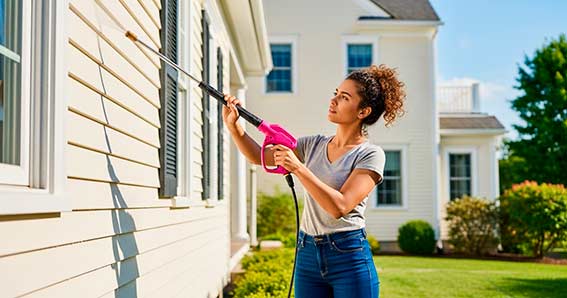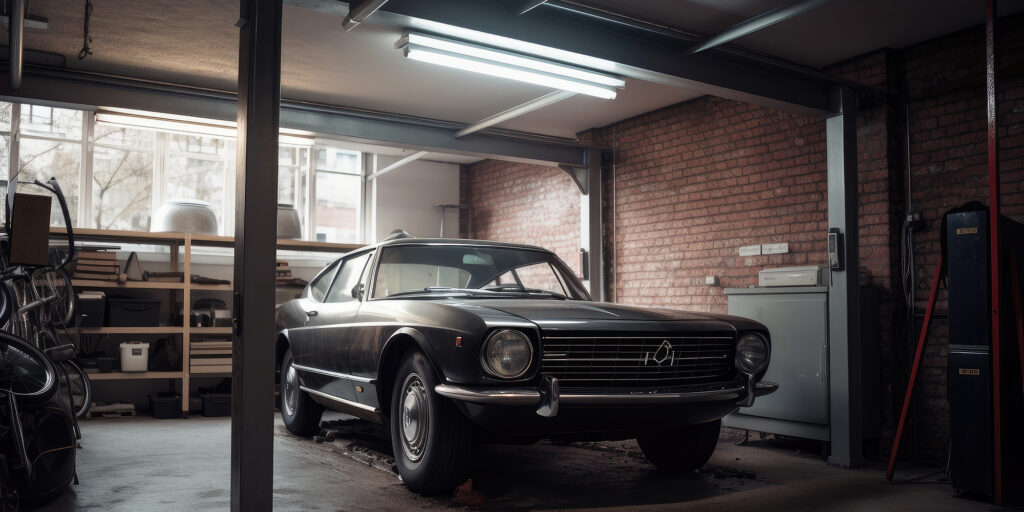
Looking to update your garage? A splash of paint can make all the difference, and it’s easier than you might think. Whether you’re a fan of latex or oil-based paint, you just need to pick up the things you need, prep your garage, and go for it! In this guide, we’ll break down how to choose the right paint color and how to apply it just right. Ready? Let’s transform that garage!
Learn how much it costs to paint your garage door.
Grab What You Need
First things first – you need the right stuff. Get your hands on some top-notch paint, painter’s tape to avoid any messy mishaps, and an oil-based primer if you’re dealing with bare wood or a PVA primer for unpainted drywall. Don’t forget paint thinner for cleaning brushes if you’re going with oil-based paints, different brushes for different areas and finishes, and drop cloths to keep your garage floor and stuff safe from paint splatters.
Get Your Garage Ready
Next up is preparing your garage. Clear out or cover up any stuff like baseboards or cabinets that might get in the way. The walls need a good clean – a mix of water and dish soap should get rid of any dirt and oil. A quick go-over with a shop vac can help get rid of any pesky dust that might mess up your paint job.
Keep Your Garage Safe
While painting, you’ll want to keep the rest of your garage safe from any accidental spills or splatters. Use painter’s tape to cover fixtures and edges. Drop cloths are key here – they’ll keep your garage floor and anything else you can’t move out of the way safe from splatters. Cover up any cabinets and the garage door to keep them looking neat and tidy.
Let The Air In
Remember to let fresh air in when you’re painting, especially if you’re using oil-based paints, as they contain stuff called volatile organic compounds (VOCs). Good ventilation can help you avoid breathing in anything harmful and can help your paint dry quicker.
Clean Those Garage Walls
Cleaning your garage walls is a two-step process: scrubbing and vacuuming. A bit of water and dish soap should help get rid of any grease and grime. Follow that up with a quick vacuum to get rid of any leftover dust and debris. That’s key for preventing paint peeling and making sure your new paint job looks amazing.
Get The Surface Ready
A good paint job starts with a good surface. If the wall is bare wood, you’ll want to use an oil-based primer. If it’s unfinished drywall, a PVA primer will get it ready for painting. Fill and smooth out any holes or cracks before you start.
Primer Time
Once the walls are clean, you can start with the primer. For oil paint, go with an oil-based primer, and for latex finishes, a water-based primer is your best bet. If you’re painting over a dark color, a bonding primer will make sure the paint sticks well. This is where brands like Sherwin Williams and Benjamin Moore come in handy – their primers create a hard shell that can take multiple coats.
How To Paint Your Garage Right
When it comes to painting your garage, there are a few things to keep in mind. First off, don’t skimp on the coats – one or two might not give you the coverage you want. Start with a thin coat, let it dry, then add a second, even coat. Better-quality paint often requires fewer coats than cheaper paints. Whether you’re using interior latex paint, exterior paint, or oil-based paint, make sure the temperature is just right. Paint dries best in a well-ventilated area that’s not too hot or too cold. For a pro-looking finish, go with horizontal strokes for the final layer.
Temperature Is Key
The temperature can really affect how your paint dries. Too hot, and it dries too quickly, leading to an uneven finish. Too cold, and the paint might not dry properly, leading to cracking and peeling. Aim for a just-right temperature between 50-80 degrees Fahrenheit.
Apply Multiple Coats
One of the best tips for painting your garage is to go with multiple coats. Start with a thin layer and let it dry. Then, apply a second, even coat. High-quality paint often requires fewer coats than cheaper paints, but make sure each coat is fully dry before you add the next. This gives you a solid color and finish that can resist wear and tear.
Picking The Right Paint
The best paint for your garage walls depends on the wall material and what you prefer. Water-based paints like interior latex paint are quick-drying and less smelly than oil-based paints, making them a good choice for garage walls. But, oil-based paint dries harder and is more chip-resistant, making it better for garage floors. If you’re painting the ceiling, a lighter color, like semi-gloss white paint, can help reflect light and brighten up the space.
Choosing Your Garage Paint Colors
When picking out paint colors for your garage, think about what you like and how you use the space. Neutral colors like light gray are popular because they create a clean, minimalist look and can make the space feel bigger. If your garage is more of a man cave, you might prefer darker colors to create a cozy vibe. The same goes for your garage cabinets – pick a color that goes well with the wall paint.

Stuff You’ll Need
To paint your garage, you’ll need a few specific tools and supplies:
Paint: The right paint is super important. For walls, water or latex-based paint from reliable brands like Sherwin Williams or Benjamin Moore is usually a solid choice. For floors and areas that get a lot of traffic, oil-based paint is better because it’s tougher and more durable.
Primers: For unfinished drywall, PVA (polyvinyl acetate) primer is essential to seal the material and get it ready for paint. An oil-based primer works well on bare wood or when you’re painting over existing oil paint.
Paint Brushes: You’ll need different brushes for different areas and finishes. For example, a 2-3 inch flat brush is great for trim and corners, while a 3-4 inch flat brush is better for large, flat areas.
Paint Rollers: These are super handy for covering large areas quickly, especially when you’re applying the first coat or primer. A roller with a thicker nap is great for textured surfaces, while a thinner nap works better on smooth surfaces.
Paint Trays: These help you load your paint roller evenly. Disposable tray liners make clean-up a breeze.
Painter’s Tape: This helps you paint clean lines and protect areas that shouldn’t get painted, like door handles, light fixtures, and windows.
Drop Cloths: These are a must for keeping your garage floor and other stuff safe from paint drips and spills. You can use plastic sheeting or canvas drop cloths.
Ladder: Depending on how tall your garage is, you might need a sturdy ladder to reach higher areas.
Paint Thinner: If you’re using oil-based paint or primer, you’ll need thinner to clean your brushes and other gear.
Safety Gear: Depending on the type of paint you’re using, you might need safety goggles, gloves, and a respirator mask to keep yourself safe.
FAQ:
How Long After Washing Walls Can You Paint?
After washing your garage walls, typically, you should wait at least 24 hours to allow the walls to dry completely before painting.
Do You Need To Prime Garage Walls Before Painting?
Yes, priming your garage walls before painting is crucial as it helps provide a smooth surface for the paint to adhere to and increases the durability of the paint job.
What Happens If You Don’t Use a Primer Before Painting?
If you don’t use primer before painting, the paint may not adhere well to the surface, leading to peeling or uneven color. Primer also helps cover stains and dark colors.
What Is The Best Paint To Use In A Garage?
The best paint for a garage wall is typically a high-quality latex or oil-based paint, depending on your needs. Brands like Sherwin Williams and Benjamin Moore offer great options.
Should I Paint My Garage Ceiling And Walls The Same Color?
It’s not mandatory, but painting your garage ceiling and walls the same color can create a clean, cohesive look. Light colors, like white or light gray, are popular choices to brighten the space.
What kind of paint do you use on garage walls?
Latex-based paint is commonly used on garage walls due to its durability and easy cleanup. However, oil-based paint can be used for areas that require a harder, more resistant finish.
What is the best paint for a garage wall?
The best paint for a garage wall is one that provides excellent coverage, durability, and is resistant to stains.
How much paint do I need to paint a 2 car garage?
The amount of paint needed can vary based on the size of your garage and the type of paint, but typically, a 2-car garage could require around 5-6 gallons for two coats of paint.
How do I paint garage walls?
First, prep the area: clean the walls and protect surfaces with tape. Apply primer, then paint, letting each layer dry.
What’s the best garage wall paint?
It depends on the walls and use. Latex or water-based paint is generally good. For high-traffic areas, consider oil-based paint.
Should I paint the entire wall in my garage?
Absolutely, painting the entire wall can give your garage a fresh, cohesive look. Just prep and protect the area first.
How can I maintain my newly painted garage?
Clean any spills immediately and touch up scratches or chips. Quality paint can last years with proper care.
